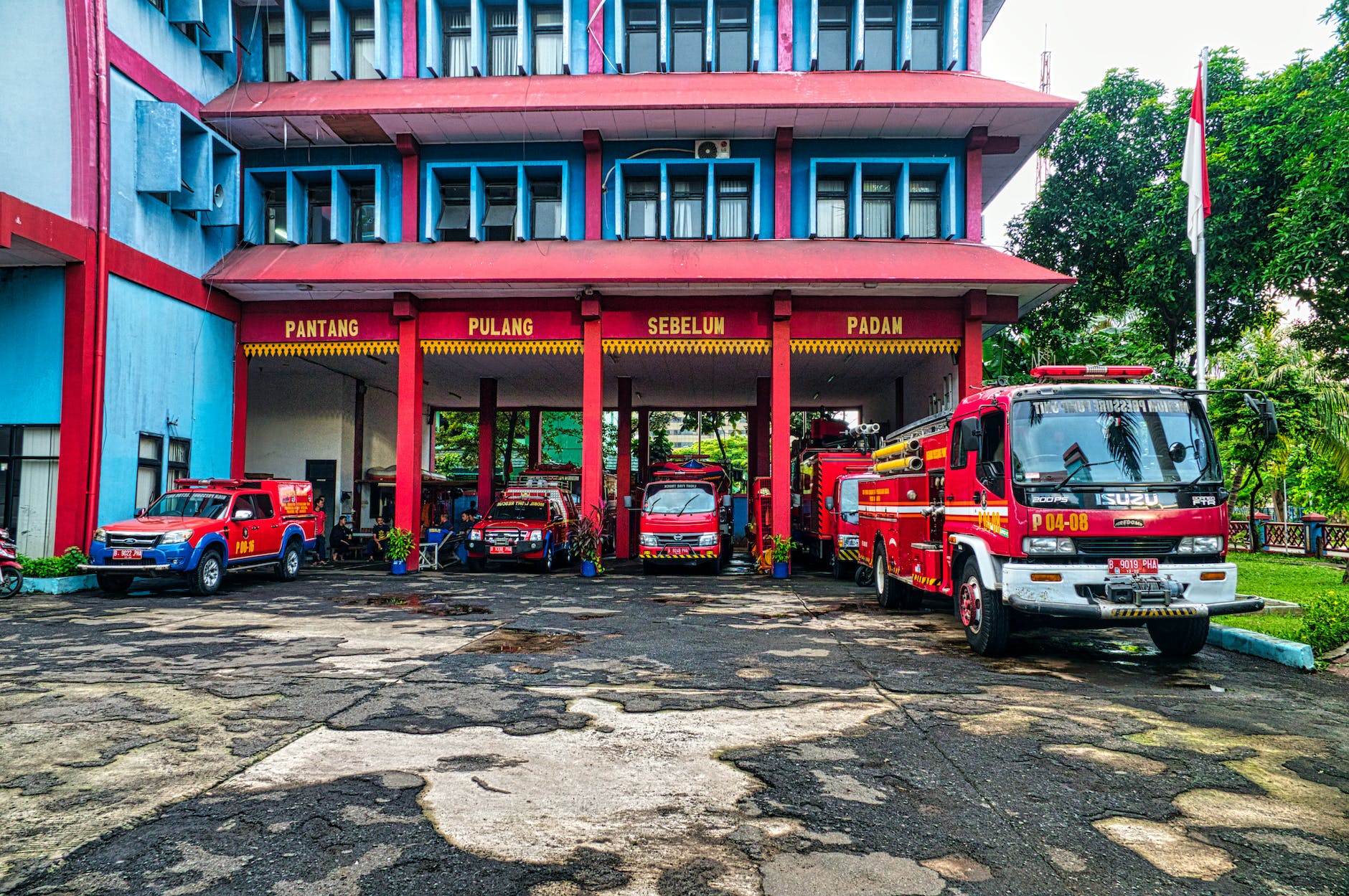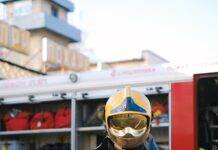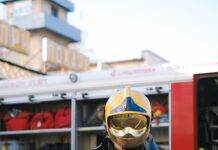
Fire Protection Engineering: Designing Fire Safety Systems for Buildings and Facilities
Introduction
Fire safety is a critical consideration in the design and construction of buildings and facilities. Fire Protection Engineering emerges as the key discipline dedicated to designing systems and strategies that prevent, detect, and suppress fires. In this article, we will explore the crucial role of Fire Protection Engineering in creating safe environments, from conceptualizing effective systems to implementing cutting-edge technologies.
Understanding Fire Protection Engineering
Defining Fire Protection Engineering
The Core Objective
Fire Protection Engineering focuses on minimizing the risk of fire-related incidents and ensuring the safety of occupants in buildings and facilities. It integrates principles of engineering, physics, and chemistry to create comprehensive fire safety solutions.
Building and Facility Types
Different structures pose unique challenges. Fire Protection Engineers tailor solutions according to the type of building or facility, considering factors like occupancy, layout, and materials used in construction.
Regulatory Compliance
Fire Protection Engineers navigate a landscape of regulations and codes, ensuring that their designs align with local, national, and international safety standards. Compliance is not just a legal requirement but a fundamental aspect of safeguarding lives and property.
Designing Fire Safety Systems
Risk Assessment and Prevention
Identifying Potential Fire Hazards
Before any design begins, Fire Protection Engineers conduct thorough risk assessments, identifying potential fire hazards specific to the building or facility. This includes assessing electrical systems, heating sources, and materials used in construction.
Preventive Measures
Once hazards are identified, engineers implement preventive measures. This may involve fire-resistant materials, proper spacing between structures, and the installation of fire-resistant barriers to slow the spread of flames.
Early Detection Systems
Smoke and Fire Alarms
Fire Protection Engineering emphasizes early detection. Engineers design and implement state-of-the-art smoke and fire alarm systems strategically placed to provide timely alerts, enabling swift evacuation and intervention.
Advanced Detection Technologies
Incorporating advanced detection technologies, such as flame detectors and heat-sensitive cameras, enhances the precision and speed of fire detection. These technologies are pivotal in large facilities where immediate detection is crucial.
Suppression Systems
Sprinkler Systems
Fire Protection Engineers design sprinkler systems tailored to the specific needs of a building. The placement, type, and capacity of sprinklers are meticulously calculated to maximize efficiency in suppressing fires.
Innovative Suppression Technologies
In addition to traditional sprinkler systems, engineers explore innovative suppression technologies like water mist systems, gas-based systems, and foam-based systems. These technologies offer specialized solutions for different fire scenarios.
Educating and Training Occupants
Emergency Response Training
Fire Protection Engineers recognize the importance of educating occupants. Designing intuitive evacuation routes, conducting fire drills, and providing training on the proper use of fire safety equipment empower occupants to respond effectively in emergencies.
Fire protection engineering involves designing and implementing systems and measures to prevent, detect, control, and mitigate the impact of fires in buildings and facilities. The goal is to ensure the safety of occupants, protect property, and comply with fire safety regulations. Here are key aspects of designing fire safety systems:- Fire Risk Assessment:
- Conduct a thorough fire risk assessment to identify potential fire hazards, assess the level of risk, and determine the specific fire protection requirements for the building or facility.
- Building Codes and Standards:
- Stay current with local, national, and international building codes and fire safety standards. Design fire protection systems in accordance with these regulations to ensure compliance.
- Passive Fire Protection:
- Implement passive fire protection measures, such as fire-resistant building materials, fire-rated walls and doors, and compartmentalization, to contain and slow down the spread of fire.
- Fire Detection Systems:
- Install reliable fire detection systems, including smoke detectors, heat detectors, and flame detectors, strategically placed throughout the building.
- Integrate fire detection systems with building management systems for quick response and notification.
- Fire Suppression Systems:
- Design and install appropriate fire suppression systems based on the type of occupancy and fire hazards. This may include sprinkler systems, gaseous suppression systems, or foam-based systems.
- Consider water supply and water storage requirements for sprinkler systems.
- Emergency Evacuation Planning:
- Develop and implement emergency evacuation plans with clearly marked exit routes, emergency lighting, and exit signs.
- Conduct regular drills to ensure that occupants are familiar with evacuation procedures and assembly points.
- Smoke Control Systems:
- Design and install smoke control systems to manage the movement of smoke within a building during a fire. This may involve the use of mechanical systems, pressurization, or natural ventilation.
- Fire Alarm and Notification Systems:
- Install an effective fire alarm system with audible and visible alarms to alert occupants in the event of a fire.
- Ensure that the fire alarm system is connected to a central monitoring station for quick response by emergency services.
- Accessibility for Firefighters:
- Design buildings to provide easy access for firefighters, including well-maintained fire lanes, hydrant locations, and access to fire department connections for sprinkler systems.
- Fire Resistance of Structural Elements:
- Evaluate and enhance the fire resistance of structural elements, such as columns, beams, and floors, to maintain the structural integrity of the building during a fire.
- Human Behavior Considerations:
- Consider human behavior in fire situations when designing fire safety systems. This includes factors such as occupant behavior during evacuation and the impact of panic on emergency response.
- Emergency Power Systems:
- Ensure the availability of emergency power systems to support fire protection equipment, including lighting, fire alarms, and communication systems, during power outages.
- Regular Maintenance and Testing:
- Establish a routine maintenance schedule for all fire protection systems and conduct regular testing to ensure their proper functioning.
- Keep accurate records of inspections, tests, and maintenance activities.
- Fire Safety Education and Training:
- Provide ongoing fire safety education and training for building occupants, emphasizing the importance of fire prevention, emergency response, and proper use of fire protection equipment.
- Integration with Building Design:
- Integrate fire protection measures seamlessly into the overall building design. Collaborate with architects, engineers, and other stakeholders to ensure a holistic and effective approach.
Fire protection engineering requires a multidisciplinary approach, involving collaboration between architects, engineers, and fire safety professionals. By implementing comprehensive fire safety systems and staying abreast of industry advancements, fire protection engineers contribute significantly to creating safer buildings and facilities.Conclusion
In conclusion, Fire Protection Engineering is at the forefront of ensuring the safety of buildings and facilities against the threat of fire. By combining rigorous risk assessments, innovative system designs, and the integration of cutting-edge technologies, engineers create comprehensive fire safety solutions that go beyond compliance to truly protect lives and property.
Fire Hazards and Control Measures
What is the Life of a Fire Sprinkler?
FAQs
- What is the primary objective of Fire Protection Engineering?
- The primary objective is to minimize the risk of fire-related incidents in buildings and facilities, ensuring the safety of occupants through the integration of engineering principles and technologies.
- How do Fire Protection Engineers identify potential fire hazards?
- Engineers conduct thorough risk assessments, considering factors like electrical systems, heating sources, and construction materials to identify potential fire hazards.
- What are some preventive measures implemented by Fire Protection Engineers?
- Preventive measures include the use of fire-resistant materials, proper spacing between structures, and the installation of fire-resistant barriers to slow the spread of flames.
- How do engineers enhance fire detection systems?
- Engineers enhance detection systems through the strategic placement of smoke and fire alarms, as well as the incorporation of advanced technologies like flame detectors and heat-sensitive cameras.
- Why is education and training for occupants essential in fire protection?
- Educating occupants on evacuation routes, conducting fire drills, and providing training on the proper use of fire safety equipment empower them to respond effectively in emergencies, contributing to overall safety.
























